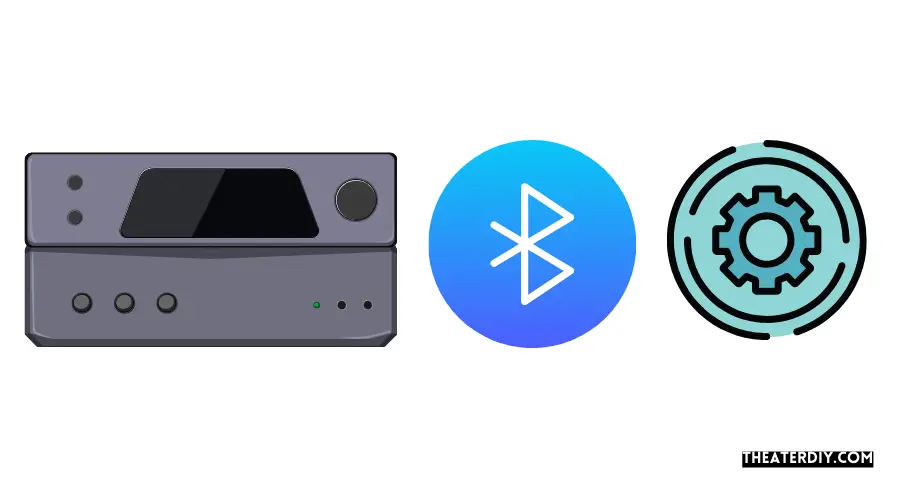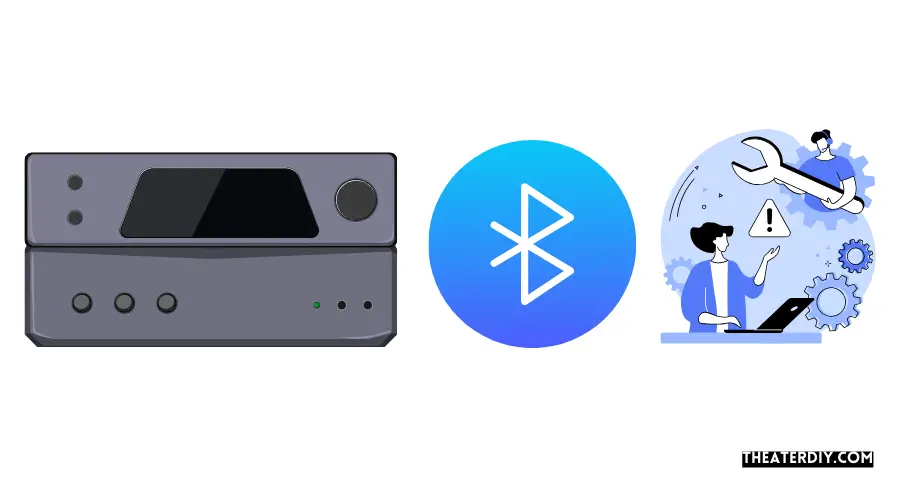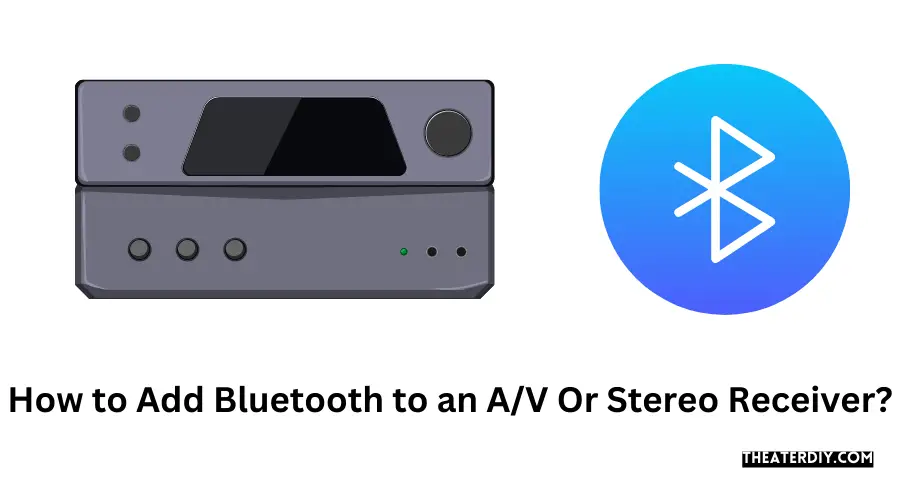To add bluetooth to an a/v or stereo receiver, you can purchase and connect a bluetooth audio adapter. These adapters plug into the receiver’s audio input and allow you to stream audio wirelessly from your bluetooth-enabled devices.
Step-by-Step Guide: Integrating Bluetooth with A/V Receivers
Adding bluetooth functionality to an a/v or stereo receiver can enhance your audio experience by enabling wireless audio streaming from compatible devices. Whether you want to play music from your smartphone or stream audio from your tablet, adding bluetooth capability can make it convenient and hassle-free.
By connecting a bluetooth audio adapter to the receiver’s audio input, you can enjoy the freedom of wirelessly streaming audio without the need for cables. We will explore how to add bluetooth to an a/v or stereo receiver and discuss the benefits of this upgrade.

Credit: www.nytimes.com
Why Add Bluetooth To Your A/V Or Stereo Receiver?
Upgrade your a/v or stereo receiver by adding bluetooth for wireless connectivity. Easily stream music from your smartphone or other devices, enhancing your audio experience without the hassle of cords or cables.
Adding bluetooth functionality to your a/v or stereo receiver allows you to enjoy the benefits of wireless audio streaming and expands your audio source options. With bluetooth, you can easily connect your smartphone, tablet, or other bluetooth-enabled devices to your receiver and play music or podcasts wirelessly.
This convenient feature eliminates the need for tangled cords and allows you to move freely around your home while still enjoying high-quality sound. Below are the main benefits of adding bluetooth to your receiver:
- Convenience of wireless audio streaming:
- Stream music wirelessly from your smartphone, tablet, or other bluetooth-enabled devices directly to your receiver.
- Enjoy the freedom to move around without being tethered to your receiver by cords or cables.
- Easily switch between audio sources and control your music playback with the convenience of wireless connectivity.
- Expanded audio source options:
- Connect and stream audio from various sources such as streaming services, internet radio, podcasts, and music libraries on your devices.
- Increase the versatility of your a/v or stereo receiver by adding bluetooth and accessing a wide range of audio content.
- Enjoy a seamless audio experience by connecting and playing music from different devices without the hassle of cables or adapters.
No longer limited to traditional audio sources, you can now enjoy the convenience and flexibility of wireless audio streaming with the addition of bluetooth to your a/v or stereo receiver. Say goodbye to tangled cords and hello to a world of musical freedom.
Choosing The Right Bluetooth Adapter

Enhance your audio experience by adding bluetooth to your a/v or stereo receiver with the right bluetooth adapter. Stream wirelessly from your devices and enjoy high-quality sound without the hassle of cables. Upgrade your setup and unlock a world of convenient connectivity options.
Understanding Different Bluetooth Adapter Options:
- Usb bluetooth adapter: This type of adapter can be connected to the usb port of your receiver. It allows you to easily add bluetooth functionality without any modifications to your receiver. Simply plug it in and pair it with your devices.
- 3.5mm bluetooth adapter: If your receiver has a 3.5mm auxiliary input, you can use a 3.5mm bluetooth adapter. This adapter connects to the auxiliary input and allows you to wirelessly stream audio from your devices to your receiver.
- Rca bluetooth adapter: For receivers with rca input/output ports, a rca bluetooth adapter is a suitable option. It connects to the rca ports and enables wireless audio streaming from your devices to your receiver.
- Bluetooth receiver with built-in adapter: Some receivers come with a built-in bluetooth receiver. This eliminates the need for an external adapter and allows you to directly connect your devices to the receiver via bluetooth.
Compatibility With Receiver And Devices:
- Before choosing a bluetooth adapter, ensure that it is compatible with your receiver. Check the specifications of your receiver to determine if it supports the type of adapter you want to use.
- Consider the compatibility of your devices as well. Make sure that the bluetooth adapter is compatible with the devices you intend to connect to your receiver, such as smartphones, tablets, or laptops.
- Pay attention to the bluetooth version supported by the adapter and its compatibility with your receiver and devices. Newer bluetooth versions offer better performance and stability.
Bluetooth Range And Signal Quality:
- Consider the bluetooth range offered by the adapter. The range determines how far your devices can be from the receiver while maintaining a stable connection. Look for adapters with a range that suits your needs, whether you plan to use the receiver in a small room or a large open space.
- Check the signal quality of the bluetooth adapter. A strong and stable signal ensures smooth audio streaming without any interruptions or dropouts. Look for adapters with features like aptx or aac support for improved audio quality.
- Keep in mind that the bluetooth range and signal quality can be influenced by other factors such as obstacles (walls, furniture) and interference from other wireless devices. Consider these factors when choosing the right bluetooth adapter for your receiver.
Remember, when choosing a bluetooth adapter, it’s important to consider the options available, compatibility with your receiver and devices, as well as the bluetooth range and signal quality provided. Taking these factors into account will help you select the right bluetooth adapter to enhance your a/v or stereo receiver with wireless capabilities.
Step-By-Step Installation Guide
Learn how to easily add bluetooth to your a/v or stereo receiver with this step-by-step installation guide. Upgrade your audio system and enjoy wireless connectivity in just a few simple steps.
Step-By-Step Installation Guide:
Adding bluetooth functionality to your a/v or stereo receiver is a simple process that can greatly enhance your audio experience. In this step-by-step installation guide, we will walk you through the process of connecting a bluetooth adapter to your receiver and pairing it with your bluetooth devices.
Gathering The Necessary Tools And Equipment:
Before you begin the installation process, make sure you have the following tools and equipment:
- Bluetooth adapter: Choose a bluetooth adapter that is compatible with your a/v or stereo receiver.
- Rca cables: You will need rca cables to connect the bluetooth adapter to your receiver.
- Power source: Depending on the bluetooth adapter you choose, you may need to connect it to a power source.
- Bluetooth devices: Make sure you have the bluetooth devices you want to pair with your receiver, such as smartphones or tablets.
Connecting The Bluetooth Adapter To The Receiver:
Once you have gathered all the necessary tools and equipment, follow these steps to connect the bluetooth adapter to your receiver:
- Power off your receiver: Before making any connections, make sure your receiver is turned off to avoid any potential damage.
- Locate the audio input ports: Look for the audio input ports on your receiver. These are usually labeled as “aux in,” “line in,” or “audio in.”
- Connect the rca cables: Take the rca cables and plug one end into the audio output ports on the bluetooth adapter. Then, plug the other end into the corresponding audio input ports on your receiver.
- Power on your receiver: After making the connections, power on your receiver and switch it to the appropriate input channel. This will allow you to listen to the audio from your bluetooth devices.
Pairing The Adapter With Your Bluetooth Devices:
Once the bluetooth adapter is connected to your receiver, follow these steps to pair it with your bluetooth devices:
- Enable bluetooth on your devices: Go to the settings menu on your smartphones or tablets and turn on the bluetooth feature.
- Put the adapter in pairing mode: Depending on the adapter you have, there may be a button or switch to put it in pairing mode. Refer to the user manual for instructions on how to do this.
- Search for devices: On your bluetooth device, search for available devices. The adapter should appear in the list of available devices.
- Pair the devices: Select the bluetooth adapter from the list and follow the on-screen prompts to complete the pairing process.
- Test the connection: Once the devices are paired, play some audio on your bluetooth device to test the connection. The audio should now be playing through your receiver.
Adding bluetooth to your a/v or stereo receiver is a relatively straightforward process that allows you to wirelessly stream audio from your bluetooth devices. By following this step-by-step installation guide, you can easily enjoy the convenience and flexibility of bluetooth connectivity with your existing audio system.
Troubleshooting Common Issues

Easily troubleshoot common issues when adding bluetooth to an a/v or stereo receiver. Learn step-by-step instructions and tips for a seamless integration.
Troubleshooting Common Issues:
Bluetooth connectivity problems:
- Ensure that your receiver and bluetooth device are in close proximity to establish a strong connection.
- Check if your receiver supports the bluetooth version of your device. Older receivers may not be compatible with newer bluetooth versions.
- Restart both your receiver and bluetooth device to reset any connection issues.
- Double-check if the bluetooth device is paired and connected correctly to your receiver.
- Remove any interference sources such as other bluetooth devices or wi-fi routers that may be causing signal disruption.
- Update the firmware of your receiver to the latest version, as it may include fixes for bluetooth connectivity problems.
- Make sure that the bluetooth antenna of your receiver is properly positioned for optimal signal reception.
Audio quality and latency concerns:
- Adjust the audio source’s volume to an appropriate level to avoid distortion or audio clipping.
- Check if your receiver supports high-quality audio codecs such as aptx or ldac for enhanced audio performance.
- Reduce audio latency by using bluetooth devices with low latency features or by connecting your receiver to your device via a wired connection.
- Experiment with different audio settings on your receiver and bluetooth device to find the best audio quality and latency balance.
- Update the drivers and firmware of your bluetooth device to ensure compatibility and improve audio performance.
- Keep your receiver and bluetooth device’s software up to date to access any optimizations or enhancements provided by the manufacturer.
Remember, troubleshooting common bluetooth issues requires patience and a trial-and-error approach. By following these steps, you will be able to resolve most problems and enjoy a seamless bluetooth experience with your a/v or stereo receiver.
Enhancing The Bluetooth Experience
Enhance your bluetooth experience by easily adding bluetooth connectivity to your a/v or stereo receiver. Enjoy wireless audio streaming with the help of simple step-by-step guides and a variety of affordable bluetooth adapters and receivers available online.
Bluetooth technology has revolutionized the way we connect and stream audio to our a/v or stereo receivers. By adding bluetooth compatibility, you can easily connect your devices wirelessly and enjoy seamless streaming. However, to truly enhance your bluetooth experience, there are a few key things you should consider.
Optimizing Audio Settings On Receiver And Devices:
- Adjust the equalizer settings on your receiver to suit your audio preferences. This can help enhance the sound quality of your bluetooth audio.
- Ensure that both your receiver and the connected devices are set to output the highest audio quality possible, such as aac or aptx.
- Experiment with different audio enhancement features that your receiver may offer, such as virtual surround sound or bass boost.
Using Bluetooth With Multiple Speakers Or Zones:
- If your receiver supports it, take advantage of bluetooth’s multi-room audio capabilities. This allows you to stream audio to multiple speakers or zones simultaneously.
- Make sure to check if your receiver supports bluetooth pairing with multiple devices, enabling quick and hassle-free switching between sources.
Exploring Advanced Features And Streaming Apps:
- Some receivers offer advanced features such as nfc pairing, which allows for quick and effortless bluetooth connections.
- Look for receivers that support popular streaming apps like spotify connect or apple airplay. These apps offer additional functionality and a user-friendly interface for streaming music wirelessly.
- If you prefer streaming music from your smartphone or tablet, check if your receiver supports bluetooth aptx low latency. This technology reduces audio lag, providing a more seamless listening experience.
Remember, to fully enjoy your bluetooth-enabled receiver, optimize your audio settings, take advantage of multi-room capabilities, and explore advanced features and streaming apps. This will ensure that you get the most out of your bluetooth experience and enjoy high-quality wireless audio throughout your home.
Frequently Asked Questions

How Do I Add Bluetooth To My Old AV receiver?
To add bluetooth functionality to your old av receiver, you can use a bluetooth receiver adapter. These adapters connect to your receiver’s audio input and allow you to stream music wirelessly from your smartphone or other bluetooth-enabled devices. First, make sure your receiver has an available audio input port, such as rca or 3.
5mm. Next, purchase a bluetooth receiver adapter that matches your receiver’s input type. Connect the adapter to your receiver using the appropriate cables, and make sure it’s powered on. Then, enable bluetooth on your smartphone or device and pair it with the adapter.
Once connected, you can play music and audio through your receiver wirelessly. This is a convenient way to modernize your old av receiver and enjoy the benefits of bluetooth streaming without having to replace your entire system.
Do Av Receivers Have Bluetooth?
Yes, av receivers have bluetooth connectivity.
Can You Add Bluetooth To A Device That Doesn’T Have It?
Yes, you can add bluetooth to a device that doesn’t have it. One way to do this is by using a bluetooth adapter. A bluetooth adapter is a small device that plugs into the audio input or USB port of a device and enables bluetooth connectivity.
These adapters are widely available and come in different sizes and shapes, so you can choose one that suits your needs. Simply plug the adapter into your device, pair it with your bluetooth-enabled device, such as a smartphone or tablet, and you’ll be able to stream audio wirelessly.
This allows you to listen to music, watch videos, and make hands-free calls through your non-bluetooth device. Adding bluetooth to your device is a convenient and affordable way to upgrade its functionality.
How Do I Connect My Old Stereo Speakers To Bluetooth?
To connect old stereo speakers to bluetooth, you can use a bluetooth adapter. Here’s a step-by-step guide: 1. Purchase a bluetooth adapter that is compatible with your stereo system. 2. Turn off your stereo system and unplug it from the power source.
3. Locate the audio output on your stereo system. It could be rca, aux, or other types of connections. 4. Connect one end of the audio cable to the audio output on your stereo system. 5. Connect the other end of the audio cable to the audio input on the bluetooth adapter.
6. Plug the bluetooth adapter into a power source and turn it on. 7. Put your bluetooth speaker or device into pairing mode. 8. On the bluetooth adapter, press the pairing button to enter pairing mode. 9. Wait for the bluetooth adapter to pair with your bluetooth speaker or device.
10. Once paired, you can play audio from your stereo system through your bluetooth speakers. Note: the specific steps may vary depending on the model of your stereo system and bluetooth adapter. Please refer to the user manuals for detailed instructions.
Conclusion
Adding bluetooth functionality to your a/v or stereo receiver can greatly enhance your audio experience. With the ability to connect wirelessly to your devices, you’ll have the freedom to stream music from your smartphone, tablet, or laptop directly to your receiver.
This means you can enjoy your favorite playlists, podcasts, and online streaming services without the need for cables or adapters. There are several options available for adding bluetooth to your receiver. You can choose a bluetooth adapter specifically designed for audio devices, or opt for a receiver with built-in bluetooth capabilities.
Whichever option you choose, the process is relatively straightforward and can be done without the need for professional installation. By following the step-by-step instructions and guidelines provided in this blog post, you can successfully add bluetooth to your a/v or stereo receiver and start enjoying wireless audio streaming in no time.
Say goodbye to the limitations of wired connections and embrace the convenience and flexibility of bluetooth technology. Upgrade your audio setup today and immerse yourself in a whole new world of sound.

